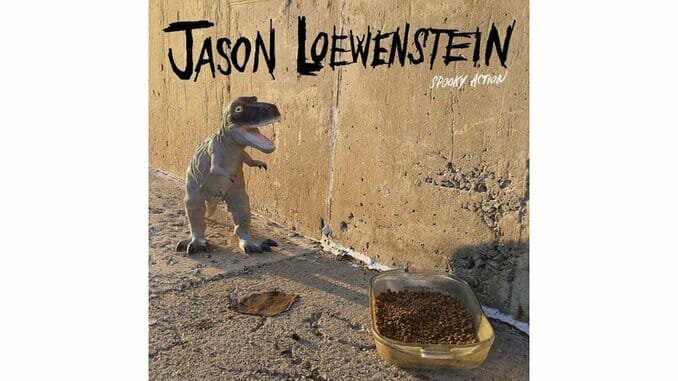Jason Loewenstein: Spooky Action

Over almost three decades, amid a changing line-up, the through line of Sebadoh’s output has been its unflinching depictions of jealousy, obsession and depression and an uncompromising adherence to the methodologies chosen to convey them. The early lo-fi days were marked by the push and pull between Lou Barlow’s bare-minimum folk numbers Eric Gaffney’s noisy sonic experimentation with sampled voices and analog hiss. When multi-instrumentalist Jason Loewenstein joined in 1989, he brought with him the potential for more traditional arrangement and structure that the band capitalized upon on their next two albums, Sebadoh III and Bubble and Scrape. Barlow’s downer diatribes dominated the output, it was the inclusion of Loewenstein’s contributions (Gaffney split the band in ‘93) allowed Sebadoh to become a fully-formed, albeit lopsided whole.
Though its principal members have all mounted solo efforts, to varying results, without the countervailing forces of the other members, none of their individual work has packed Sebadoh’s visceral punch. Spooky Action, Jason Loewenstein’s second solo outing, is no exception.
Spooky Action, the bulk of which was written and recorded in Loewenstein’s home studio in the fall and winter of 2016, arrives some 15 years after his solo debut, At Sixes and Sevens, and offers glimmers of his various musical sensibilities. In the snippets of contextless taped conversations he includes, he evokes the experimental solo work he released under the name Sparkalepsy. And through his joyously thudding basslines and frustrated examination of relationship dynamics—“Miscommunication/seems more like a reflex/rehearsing some rhetoric/and I’m a deer in your headlights,” he sings on “Navigate”—he holds true to the Sebadoh line.
-

-

-

-

-

-

-

-

-

-

-

-

-

-

-

-

-

-

-

-

-

-

-

-

-

-

-

-

-

-

-

-

-

-

-

-

-

-

-

-








































